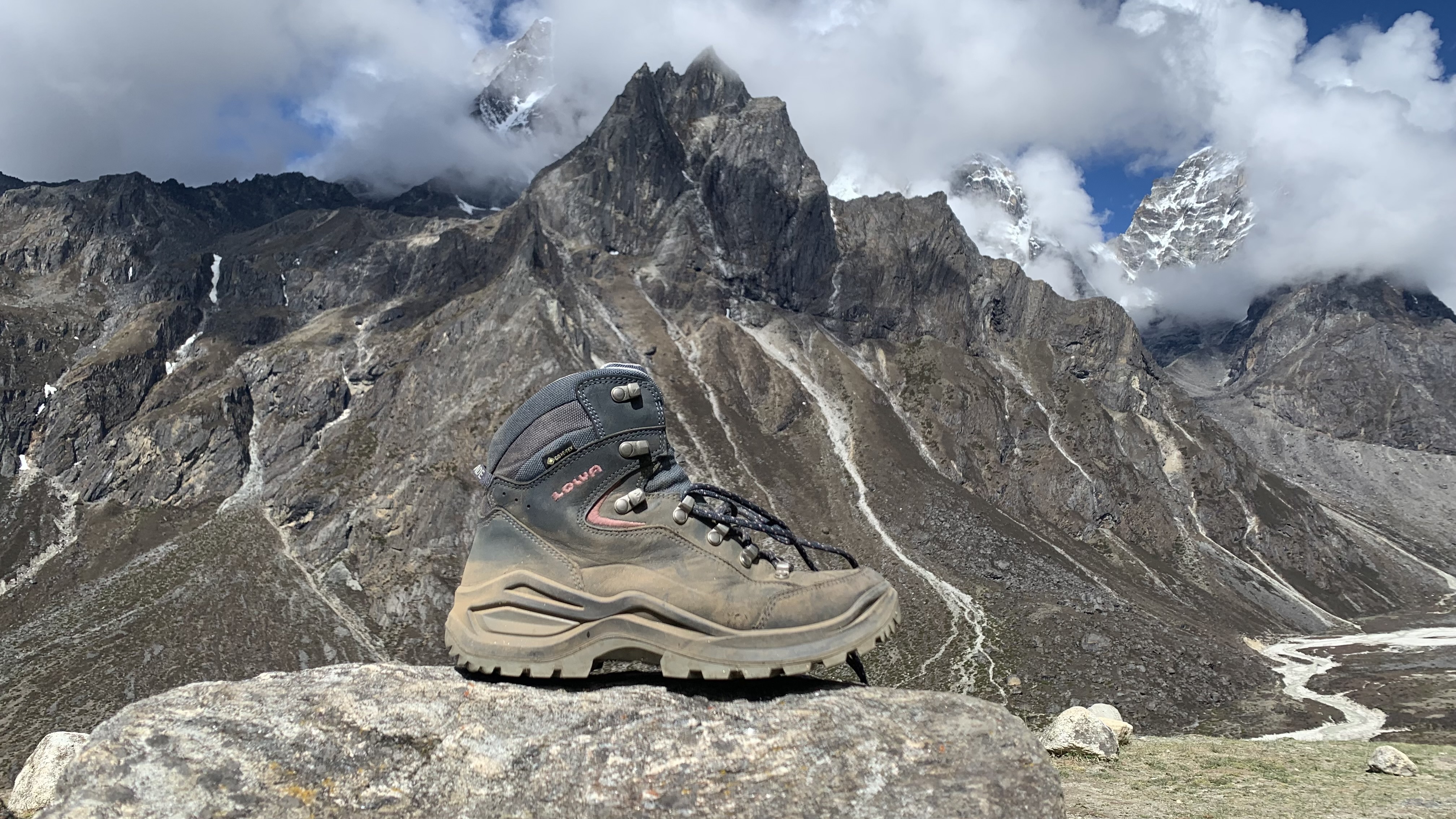
Lowa Renegade Evo GTX Mid hiking boots: first impressions
When you've been handcrafting hiking boots for over a century, like Lowa has, you know when you're onto a good thing, and that's why the German brand has revisited its highly acclaimed Renegade.
Designers of the Lowa Renegade Evo GTX Mid have added innovative technology to improve the fit, comfort and performance of the boot, and I think it excels on all counts. To be fair, we already loved its predecessor when we tested it back in 2022, with our expert reviewer calling it a 'modern classic' and concluding that it was sturdy, well-built and comfortable. With the recent upgrades, I'd say the Evo is as close to perfect as a boot can be for everything except technical winter hill hiking.
I tested this boot in the Highlands of Scotland and the hills of the Himalayas, from late winter to early summer, and found it to be comfortable both straight out of the box, and months later, even when I wore it for hours at a time and many days in a row. The dual-layer Dyna PU midsole is by no means the softest and plushest I've ever hiked in – in fact, you get quite good trail feel – but it's flexible and protective, and I've never experienced anything close to foot fatigue in these boots, even after seven hours of walking.
The comfort factor is also aided by customizable lacing zones and what Lowa calls its Monowrap support frame, which the brand says provides a three-dimensional cradle to guide and protect your foot over uneven surfaces. A higher than usual ankle cuff is more supportive than many boots I've tested, but remains very comfortable.
• List price: $280 / £220
• Models available: Men's and women's
• Sizes: Men's 7.5–14 (US), 6.5-15 (UK), Women's 5.5–12 (US), 2.5–10 (UK)
• Weight (women's US 6 / UK 4, per boot): 1lb / 460g
• Materials: Nubuck leather upper, Gore-Tex waterproof membrane, Dyna PU midsole, Vibram Rene TRAC outsole
• Colors: Many
• Best use: Hiking
Speaking of uneven surfaces, for traction, the EVO boasts an exclusive Vibram outsole designed specifically for this model called Rene TRAC, and I've had no issues with grip whether I've been climbing over frosty rocks during alpine starts or romping across boggy British hills.
The Nubuck leather upper looks good even after more than 200 miles of walking, thanks in part to fewer seams in the construction, which the brand says cuts down on potential failure points. The upper manages to be breathable in warm weather, despite a Gore-Tex lining that kept my feet dry while wading through shallow streams.
It's not the lightest boot I've tested, and that's mostly down to it being a leather boot rather than synthetic, but it's by no means heavy either, and of course the trade off is a more durable construction. It also isn't a winter hiking boot, and in the coldest of weather, I did notice the lack of insulation. But it doesn't claim to be engineered for snow, we're just letting you know in case you need something for frigid temperatures.
It's also on the pricey end, but again, I'd expect to pay more for a higher quality boot that should last years.
In conclusion, this model is a big step forward from an already-great hiking boot and I've loved every step I've taken in it.
Lowa Renegade Evo GTX Mid hiking boots: in the field
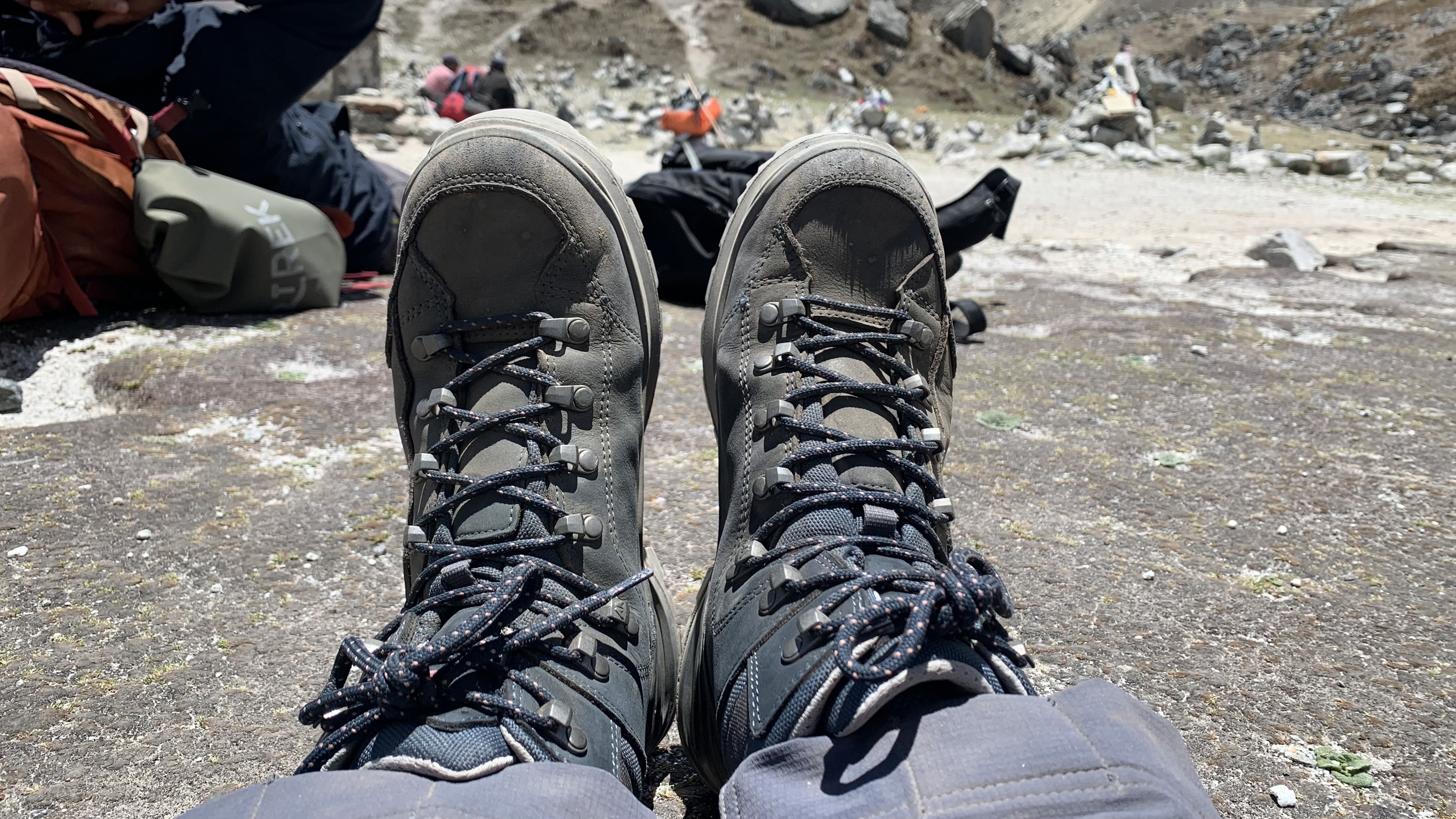
When I was offered the chance to trek over 11 days to Everest Base Camp, I knew I'd need a solid pair of hiking boots. I wanted something with more flex than my Hanwag Makra Trek boots for the long days, but suspected I'd need something sturdier than my super comfortable Columbia Konos TRS Mid.
I was already testing these boots, which I received from Lowa UK, and after wearing them on a two-day training hike in the Scottish Highlands, where I did nearly 20 miles (30km) in them without sore feet, I realized they were going to be perfect for my trek.
Between training for Base Camp in Scotland and the trek itself, I've put over 200 miles (322km) in these boots from late winter through early summer to give them every chance to show me what they're capable of. Here’s how they performed:
Sizing, fit and comfort
I tested these boots in a UK 4 (US 6), which is what I usually choose. It's a half size up to give my feet room to swell, and I'd say these boots fit true to size. I've worn them with fairly thick hiking socks and still had enough room for my toes, though I suspect I could have gotten away with going up a full size. Lowa also offer both wide and narrow options in select colorways so you can customize the fit.
When they arrived, I was worried that the toe box looked too narrow, but this hasn't been an issue at all. My higher arches often mean I suffer pain on the tops of my feet, but I've had no problems at all in these boots, and that may be down to the two independently adjustable lacing zones (one on the forefoot and one on the upper) that allow me to tailor the fit.
Though these boots don't have the plush, bouncy midsole of something like the Hoka Kaha 3s or my Columbia Konos, I'm able to wear them for at least six hours a day and over multiple consecutive days without ever experiencing any rubbing, blisters, or even foot fatigue. In fact, I don't recall once having that feeling of just wanting to tear my boots off at the end of the day, which is saying something. I put this down to the supportive fit, protection and just the right amount of flex in the sole.
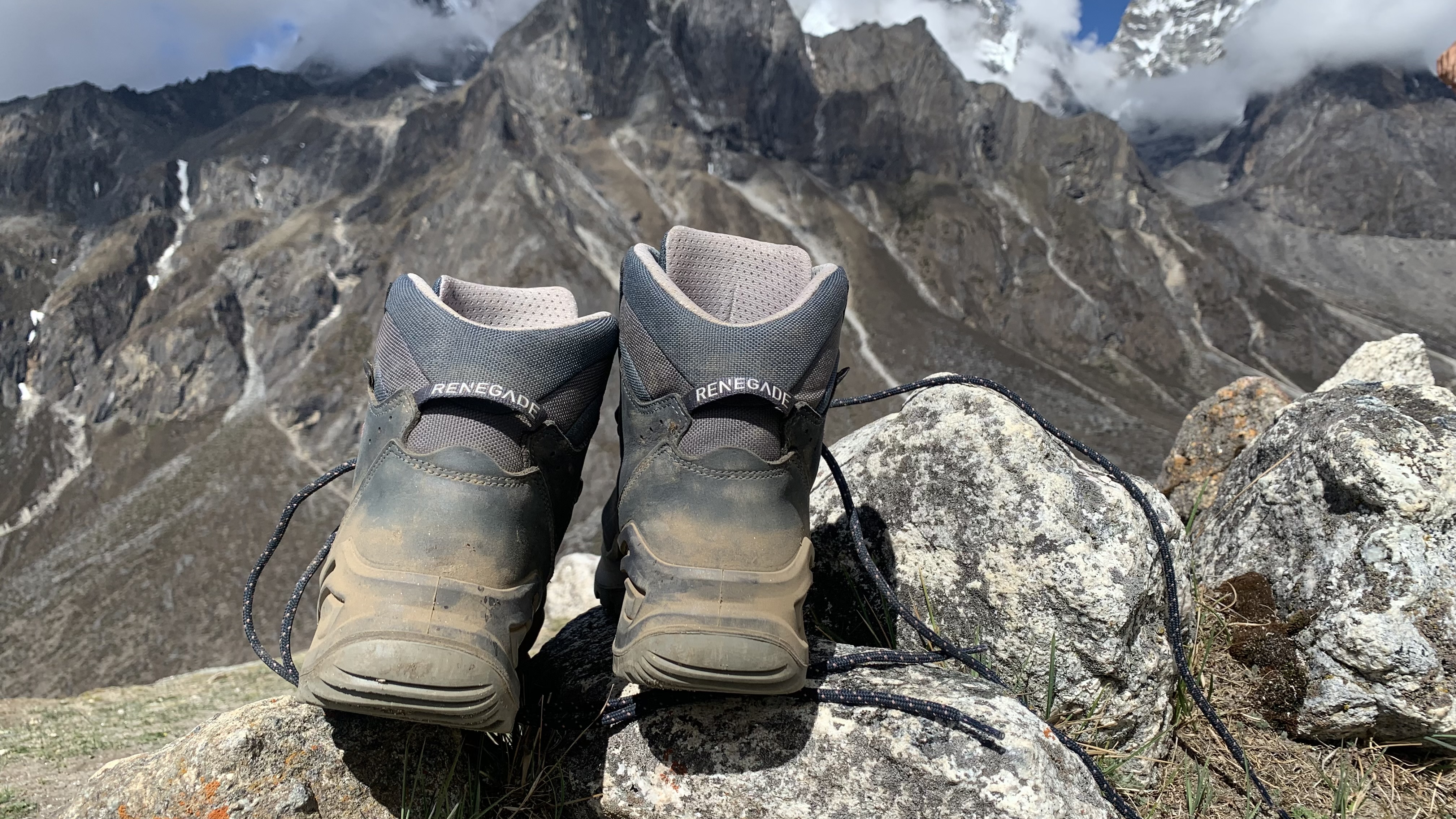
Breathability and protection
These boots are waterproof, so I was a little worried about breathability, especially as we mostly experienced shorts weather on the trek to Everest Base Camp. I needn't have worried, however, as I never experienced overly sweaty feet (beyond what you'd expect while hiking in warm weather) and that remained true whether I was wearing wool or synthetic socks. Based on their performance in Nepal, I'm planning to continue hiking through the summer in the Renegade EVO GTX Mids.
Fortunately we didn't get much rain in the Himalayas, but I've put the Gore-Tex lining through its paces over the past few months here in Scotland, making a point to stand in a few streams as much to wash my boots as to test the membrane and I can say with confidence that it's watertight.
The clever sole manages to have a little flex and give a nice amount of trail feel, but still proves protective when I'm walking over rockier terrain, and of course the upper has added reinforcements around the toes.
I'm not someone that needs all my walking footwear to have ankle protection, but I'd say the higher ankle cuff gives good protection and stability while still being really comfortable.
The only time I noticed a chink in the armor was when I got up at 3am to hike Kala Patthar, which is even higher in elevation than Base Camp. It was a cloudless night and absolutely frigid out, and I did have some nippy toes by the time I reached the top. It was a short hike and wasn't a real issue, but just to underscore the point: these aren't winter boots.
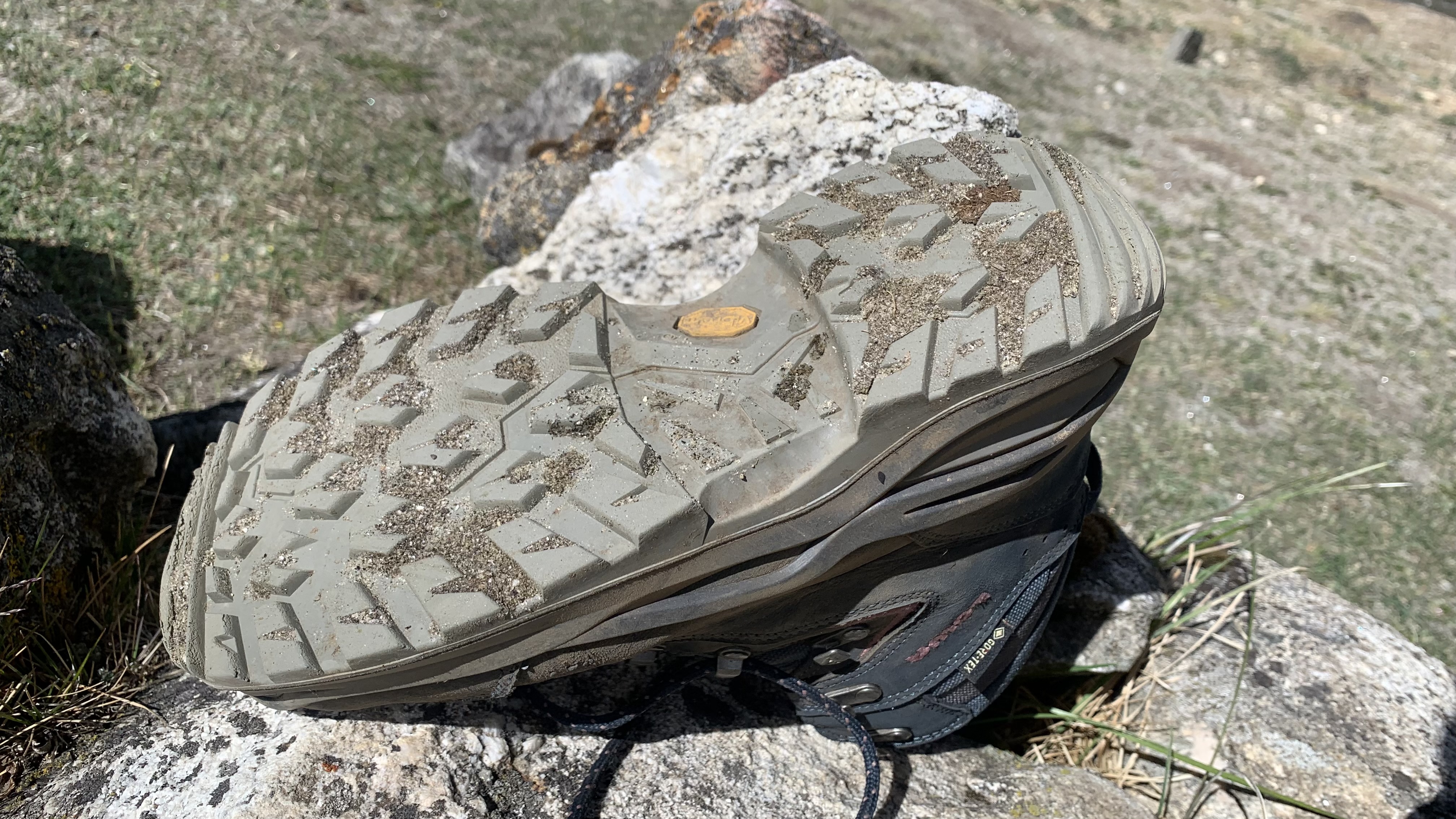
Grip and stability
The yellow Vibram stamp on the outsole was a good indication to me that these were going to keep me on my feet come rain, mud or frost, and the Italian brand hasn't let me down. Whether I've been on slick, boggy terrain or steep, crumbly slopes, I've yet to slip in them. I can't say how much traction you'll get in snow and ice, but on the Khumbu glacier and over frosty rocks at Kala Patthar I had no issues with grip.
As for stability, I can't say I was aware of the frame that's been engineered to guide my foot until I read up on the specs, but I can say that I've been able to walk confidently across all types of terrain, from lumpy bogs to alpine tundra without a rolled ankle (although I do hike with trekking poles).
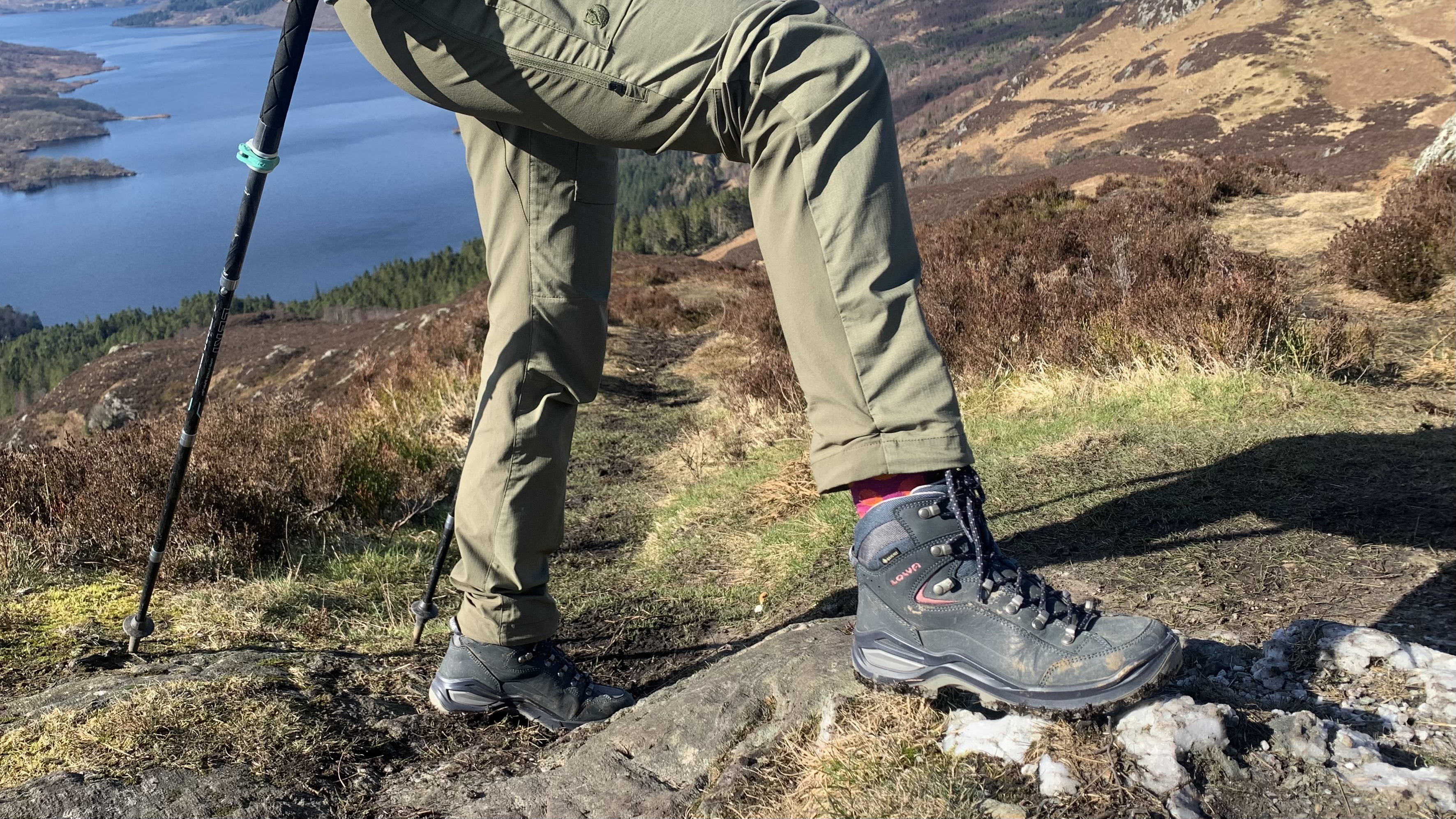
Value
There's no getting away from the fact that these aren't the cheapest boots on the market, but they're also far from the most expensive. Certainly, the price tag does exclude some customers, but you're getting a high-quality, long-lasting boot for the price.
That means Nubuck leather, a Vibram outsole, made in Europe and without any intentionally added PFAS, all of which I'd be happy to pay extra for, and I'm pleased to see that the sole has some recycled components to it.
Also consider
The Lowa Renegade Mid GTX might not have the technical innovations of its successor, but we still rate this excellent boot. It's sturdy, yet comfortable out of the box, and provides excellent waterproofing and grip so you can wear it across the seasons. We found this model wasn't quite as high volume as the new version, so it might not be ideal for those with high arches, but of course, you're bound to find it at a better price now that a brighter, shinier version has come along.
Read our full Lowa Renegade GTX Mid review.
Pros
- Comfortable, well-padded tongue and ankle cuff
- Gore-Tex waterproofing
- Supportive and stable
- Grippy Vibram sole
Cons
- Warmer and heavier than a fabric hiking boot
- Not the most cushioned underfoot
- No protective toe bumper or rubber rand
- Not cheap
The Merrell Moab is another hiking classic that proved a popular choice on the trek to Base Camp. The American-built boot shares a lot of similar DNA to the Renegade, with a leather upper, Vibram outsole and Gore-Tex lining. In our field tests, we found we could wear it upon arrival without any break-in period required, but noted its robustness and good protection. Whether you'd get on with this boot better than the Renegade probably just comes down to personal preference, but it has a lower ankle cuff and a lower price, in case that swings it for you.
Pros
- Comfortable
- Grippy
- Accommodating fit
- Robust build
Cons
- Low ankle cuff even for a mid
- Run warm in hot weather
- Quite chunky
- Not the lightest
Comparison table
Hiking boots |
Lowa Renegade Evo Mid GTX |
Lowa Renegade Mid GTX |
Merrell Moab 3 Mid GTX |
|---|---|---|---|
Price |
$280 / £220 |
$245 / £195 |
$165 / £130 |
Weight (average, per boot) |
1lb 5oz / 590g |
1lb 5oz / 595g |
1lb 1.5oz / 495g |
Materials |
Nubuck leather upper, Gore-Tex waterproof membrane, Dyna PU midsole, Vibram Rene TRAC outsole |
Nubuck upper, Gore-Tex lining, PU midsole, Vibram Evo sole |
Pigskin leather and mesh upper; Gore-Tex membrane; 100% recycled mesh lining; Merrell Air Cushion heel; Vibram TC5+ outsole |
Best use |
Hiking |
Hiking |
Hiking |







